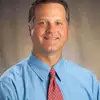More than one million Americans will experience a cardiac event this year (Circulation 2011;123:e18-e209). Most are scared, unsure of what to expect and how to move forward with recovery. They need a proven method for recovery, one that has been shown not only to make patients stronger, healthier and more confident but also to reduce mortality, rehospitalization, revascularization and functional disability. They should turn to cardiac rehabilitation (CR), but too few–only 10 to 66 percent–participate.
Many professional associations recognize CR as an important component of a comprehensive treatment plan (Cochrane Database Syst Rev 2011:CD001800; Am J Med 2004;116:682-92; Med Sci Sports Exerc 2002;34:1705-13; J Am Coll Cardiol 2009;54:25-33). Its combination of individually tailored exercise, focused counseling and aggressive risk factor modification improves exercise capacity, smoking cessation, cardiac risk factors and psychosocial well-being. The benefits of CR also are additive in nature, with greater benefits achieved with more attendance (J Am Coll Cardiol 2009;54:25-33).
CR also benefits hospitals because it reduces readmission rates and decreases hospital costs (Am J Med 2014;127:538-46; Am Heart J 1992;123:916-21). For many cardiac-related diagnoses, CR is an insurance benefit, helping reduce financial burden on patients as they recover from cardiac events.
Despite strong evidence, CR participation by eligible patients is low, between 10 and 66 percent nationally (MMWR Morb Mortal Wkly Rep 2008;57:89-94; J Am Coll Cardiol 2015;65:2079-88; J Am Coll Cardiol 2015;66:917-926; J Cardiopulm Rehabil Prev 2011;31:203-210). Low CR participation is especially true for women, the elderly, minority populations and the economically challenged, all of whom are less likely to be referred to—and to participate in or complete—a CR program once referred (Circulation 2015;131[4]:e29-e322; Eur Heart J 2013;34[38]:2949-3003; Am J Med 2014;127[6]:538-546).
Personal barriers, including poor social support, career responsibilities, limited finances, travel difficulties and diminished confidence, also can result in patients not enrolling in CR or, once enrolled, not attending their program. Systematic limitations, such as poor referral patterns, limited availability and center location, create additional barriers to participation. In fact, variation in referral rates may result from physicians referring only those patients deemed likely to participate in CR programs rather than all eligible patients, further diminishing the candidate pool (J Am Coll Cardiol 2009;54:25-33; J Am Coll Cardiol 2015;66:917-926).
Professional associations, such as the American Association of Cardiovascular and Pulmonary Rehabilitation (AACVPR) and its partners, are focusing on ways to improve CR utilization through guidelines, research and legislative efforts. For example, AACVPR advocates for process improvement efforts, such as implementation of automated referral, preferably while patients are still in the hospital; more flexible medical coverage options; and reduced co-payments associated with CR attendance. AACVPR also is exploring innovative CR delivery methods, engaging advanced technology to improve tele-monitoring, in-home or community wellness programs.
It will take a combined effort of patients, physicians, health professionals, industry and professional organizations to improve CR utilization. Recognizing there is a problem is the first step. Moving to action and redefining how CR is referred, provided and reimbursed will be the next step toward improving the lives of people with cardiovascular disease.
Adam deJong, MA, FAACVPR, is the manager of cardiovascular services at Genesys Regional Medical Center in Grand Blanc, Mich., and is a faculty lecturer in the School of Health Sciences at Oakland University in Rochester, Mich. He is the 2016 president of the AACVPR Board of Directors.
